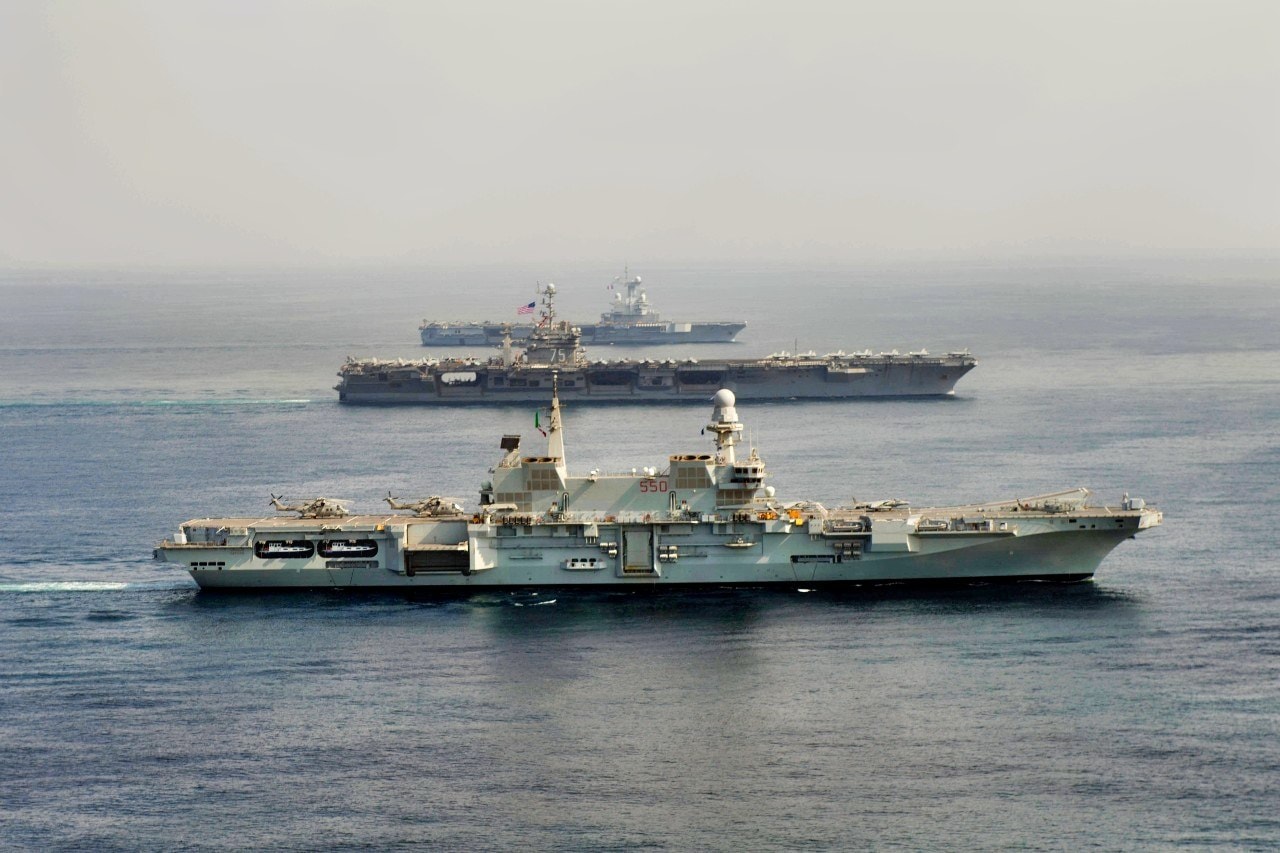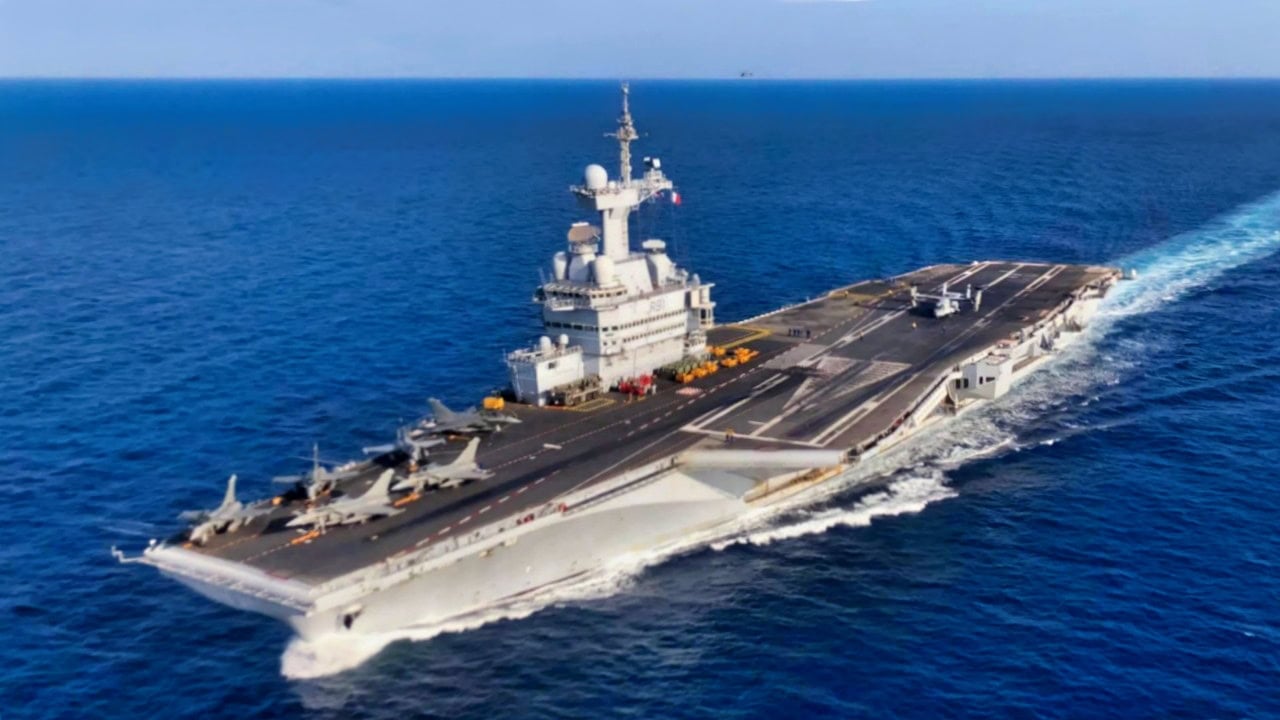If Paris would like to maintain its status as one of the world’s few nuclear-carrier nations, continued investment in aircraft carriers in the future is crucial.
France’s current and only aircraft carrier, the nuclear-powered Charles de Gaulle, is Paris’ primary tool for projecting power on a global scale. The carrier, commissioned into the French Navy in 2001, is the only actual carrier in European navies today, aside from the two carriers operated by the British Royal Navy (several other European nations operate smaller helicopter carriers or vertical take-off and landing ships.

French Aircraft Carrier Charles de Gaulle.
It takes more than a single aircraft carrier to maintain a continuous presence at sea. During routine maintenance or longer overhauls, a single carrier would not be able to put to sea, which would leave the French Navy without an available carrier strike group.
Even nuclear-powered ships, such as the United States Navy’s aircraft carriers, cannot be out at sea for an indefinite period of time, as they must periodically take on foodstuffs, medical items, and other consumable supplies. Indeed, the Charles de Gaulle’s midlife refit in 2017 and 2018 left French operations at sea significantly curtailed for the duration of the 18-month refit.
France is also a country with commitments and responsibilities that span the entire globe from the Atlantic to the Mediterranean, with significant territory throughout the Indo-Pacific region.
When considering French overseas departments in the Indian Ocean as well, the number of French citizens living there and in the Pacific expands to 1.5 million people. This also means that France has the world’s second-largest Exclusive Economic Zone, and protecting those assets is of high importance.
France’s strategy of power projection and presence, particularly in the Pacific Ocean, relies heavily on air power at sea or the ability to project strikes by naval aviation within the protection coverage of a robust air defense umbrella. Without a carrier strike group at sea, it would not be possible to conduct these kinds of expeditionary missions.
Show Me the Money
Projecting power far out at sea doesn’t come cheaply, however. France’s upcoming PANG aircraft carrier, an acronym for the French “Porte-avions de nouvelle génération,” will cost around €8 to €10 billion just for the carrier’s construction costs.
To put that into perspective, the French defense budget is around €50 billion. When considering the other investment needs of the French Navy, which also aims to allocate resources for new frigates, the costs are remarkable.
The high upfront costs of building the new PANG aircraft will necessitate acute budgetary trade-offs that could escalate in the event of budget overruns or unanticipated expenses.
The cost of operating the carrier would also eat into the Navy’s budget—and this at a time when there is an argument for investing in long-range anti-ship weaponry, drones, or other conventional systems, such as submarines, which makes a strong case for tight defense Euros.
The Defense Industrial Base
Aircraft carrier shipbuilding supports the French defense industrial base and, consequently, the country’s strategic independence. Nuclear propulsion, the aerospace sector, and French shipbuilders all gain through aircraft carrier building.
Finalizing a build would inject research and development funding into a vital French nuclear ecosystem. The decision would, in essence, be as much an industrial policy as it would be a purely naval question with significant implications and knock-on effects.
Though French shipyards would not be able to compete hull-for-hull with, say, China’s shipyards, being a carrier power in the Indo-Pacific—but with just a single carrier—would be a challenging game to play.
The Critique
Similar to the United States, the idea of an expanded French aircraft carrier presence has sustained criticisms that the carrier is too large and too expensive a target to justify in the era of increasingly long-range anti-ship and area-denial weaponry. The amount of money that could be spent on submarines, underwater drones, or other assets makes a strong argument.
However, given France’s relations with other carrier powers, namely the United States and Great Britain, the French Navy could likely count on the support of those navies, as well as other friends and allies.

(Jan. 3, 2014) The Italian navy aircraft carrier ITS Cavour (CVH 550), front, the aircraft carrier USS Harry S. Truman (CVN 75) and the French navy aircraft carrier Charles de Gaulle (R 91), conduct operations in the Gulf of Oman. Harry S. Truman, flagship for the Harry S. Truman Carrier Strike Group, is conducting operations with Task Force 473 to enhance levels of cooperation and interoperability, enhance mutual maritime capabilities and promote long-term regional stability in the U.S. 5th Fleet area of responsibility. (U.S. Navy photo by Mass Communication Specialist 3rd Class Ethan M. Schumacher/Released)
One of the French strengths at sea is their advanced nuclear submarines, the Barracuda-class SSNs, as well as the Triomphant-class of ballistic missile submarines. Euro for euro, those platforms may offer a more potent area-denial capability than their larger aircraft carrier counterparts.
What Happens Now for France and Its Aircraft Carrier?
Still, there is no viable alternative now for the capabilities that an aircraft carrier brings to the table, particularly in terms of range, endurance, and firepower. The concerns that evolving technology, rising costs, and vulnerability are all valid arguments that address essential critiques. However, if France would like to remain one of the world’s few nuclear carrier-capable powers, continued investment in these platforms would be strategically important.
About the Author: Caleb Larson
Caleb Larson is an American multiformat journalist based in Berlin, Germany. His work covers the intersection of conflict and society, focusing on American foreign policy and European security. He has reported from Germany, Russia, and the United States. Most recently, he covered the war in Ukraine, reporting extensively on the war’s shifting battle lines from Donbas and writing on the war’s civilian and humanitarian toll. Previously, he worked as a Defense Reporter for POLITICO Europe. You can follow his latest work on X.
